Black spruce: description, varieties, planting and care

Spruce is one of the most popular conifers. It has not only aesthetic, but also multiple healing properties that are widely used in medicine and aromatherapy. Today there are many types of spruce, but one of the most interesting is the black one. We will talk about it below.
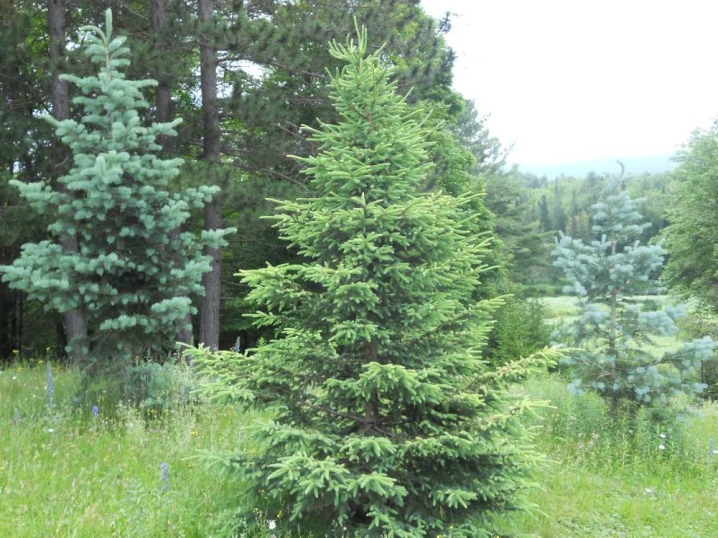
Description and features
The second name for black spruce is Picea mariana. This tall and unpretentious tree grows in the colder regions of North America. Its habitat is the forest-tundra, where the culture has to face a number of conditions unsuitable for survival every day: severe frosts, lack of precipitation, cold summers, swampy areas, soil poor in nutrients. In such a climate, black spruce rarely grows above 15 meters. But when it was introduced to Europe, the growth rate doubled, and the spruce began to grow up to 30 meters in height.
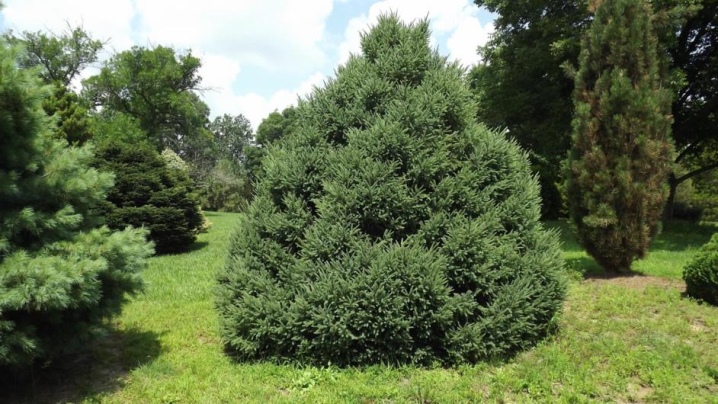
However, she categorically cannot stand the direct sun and excessively hot temperatures.
Black spruce is an evergreen crop with impressive growth and trunk girth, which in some cases can reach as much as 90 cm. The shape of the crown is similar to a cone, the branches located at the bottom practically touch the ground. There are many scales on the bark, the color ranges from light gray to reddish. The needles are thin, their color is usually blue-green. The needles cover the branch densely, and if you rub them, you can feel the usual aroma. Cones resemble an egg in shape, they are small, and until the tree is ripe, they have an unusual purple color. If they are not cut off, they will hang on the same tree for up to 30 years.
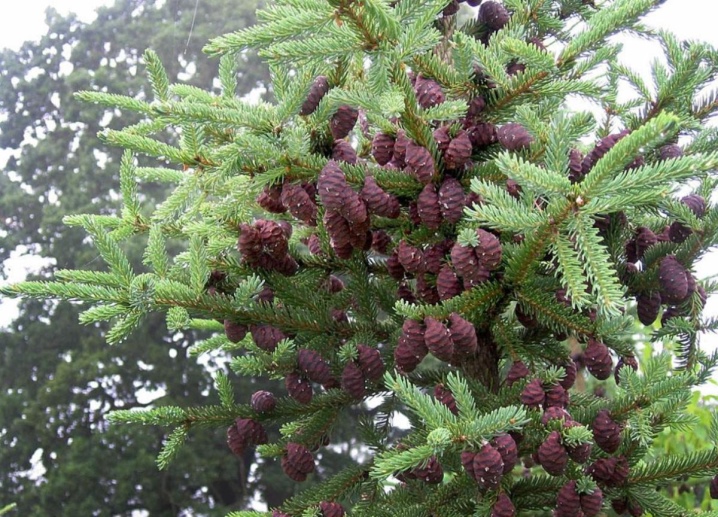
Varietal variety
The most common are 5 varieties of black spruce, let's analyze each one separately.
- "Aurea". One of the rarest varieties, first bred in a German nursery. The characteristics of its needles are unique: they are silvery needles covered with light golden pollen. If you look at the spruce from a distance, you will get the impression that it shines and shimmers.
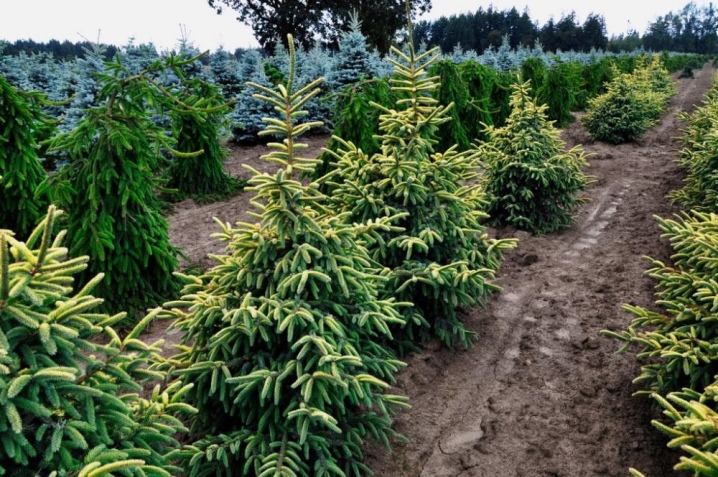
- "Doume". Originally from France, it rarely grows tall. The crown is shirokokonicheskaya, branches tend upward. The needles are blue, dense, with numerous cones. One of those rare trees that can propagate by cuttings. Looks great both alone and in the company of other fir trees.

- Baysneri. A silvery green subspecies with a round crown. The maximum up to which the Christmas tree can grow is 5 meters, and it is interesting that its height and diameter are equal. It grows rather slowly, it is recommended for general landscaping of parks and squares.

- "Nana". This is a dwarf tree that grows up to 0.5 m. This means that it can be grown even in an apartment. Differs in slow growth, as well as greenish needles with a blue undertone. Fluffy, feels great even in the conditions of the streets crowded with dirty air.
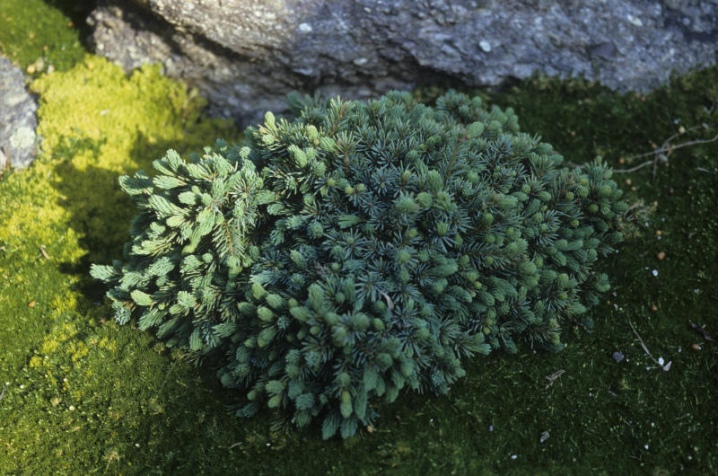
- "Kobold". This is a hybrid created by crossing Doumeti and Omorika. It grows up to a meter in height, has an aesthetic and pleasant appearance. The crown is very dense, similar to a ball, in addition, the plant is covered with unusual lilac cones.
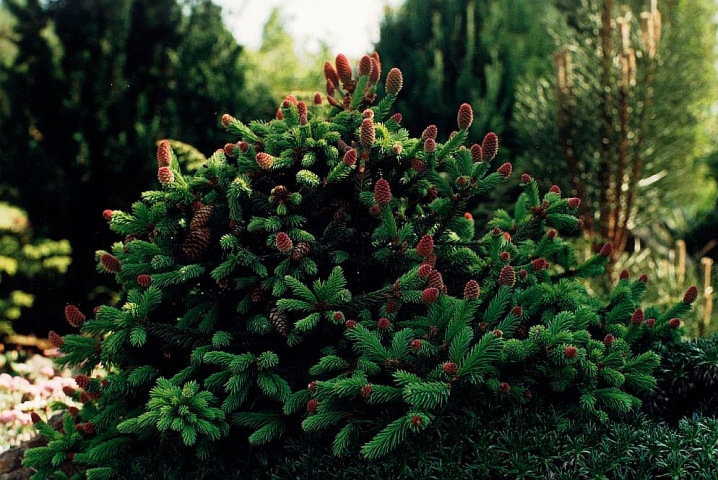
Landing
Before planting a spruce, you need to choose the right one. Since we are talking specifically about the black variety, it is hardly advisable to find cones and try to grow a spruce from them. Therefore, the only option is the nursery. When you arrive, make sure that the crop is dug up in front of you, or that it is sold directly in a container.
It is impossible to take a tree with bare roots, it will not take root, an earthen lump is required here.
The site for planting should also be chosen carefully. Novice gardeners do not always know that spruce is quite "greedy", so it will suck out everything useful from the nearby soil. This means that you cannot have crops nearby that you hope to harvest. Besides, if you plan to plant a high grade, make sure that no electric wires pass over the site... Another point is shading. The spruce will not stand if the sun shines on it all day - the crown of such a tree will quickly turn yellow, and it itself will begin to ache and stop growing.
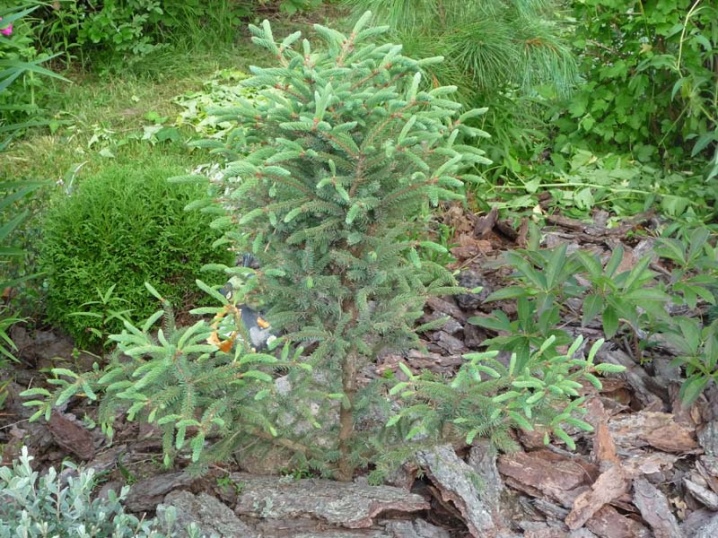
A good option is to plant a tree in the company of birches.
Black spruce is planted in the spring or at the very beginning of autumn. If you bought a seedling directly in a container, the timing can be changed, since the tree is already adapted. The size of the hole should be the same as the clod of earth on the roots. If a large tree is planted, the parameters of the pit can be slightly increased. Broken brick is located at the bottom, which will take over the drainage function. Then the earth is poured, the best option is 2 parts of turf and leaf land and one part of sand and peat. The next stage is the immersion of the spruce together with an earthen lump. The roots cannot be buried; they must be close to the surface.
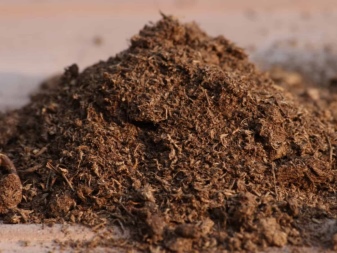

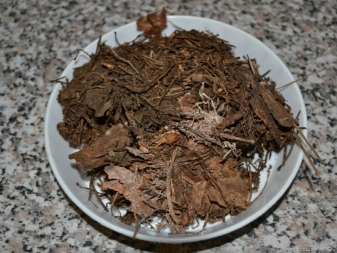
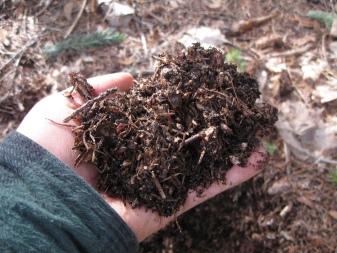
Having spread the roots, they are covered with soil, and then lightly tamped. After that, two pegs are driven in on the sides, which will serve as fixators, the culture is tied to them. The tree circle is watered and then mulched, this will help protect the tree from cold and pests, as well as preserve nutrients in the soil. Sawdust or peat works well as mulch.
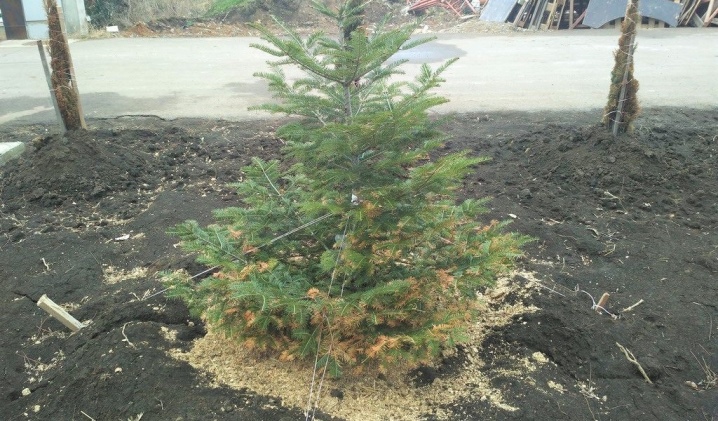
Correct care
In caring for a tree, strong difficulties are not foreseen. The first thing to note is the regularity of watering. In summer, on especially dry days, the plant is watered more often, but it should not be overfilled, since black spruce can tolerate droughts. Water is served once a week, but it is not poured directly under the barrel, but around, in the near-barrel circle. Each watering uses about a bucket of water.
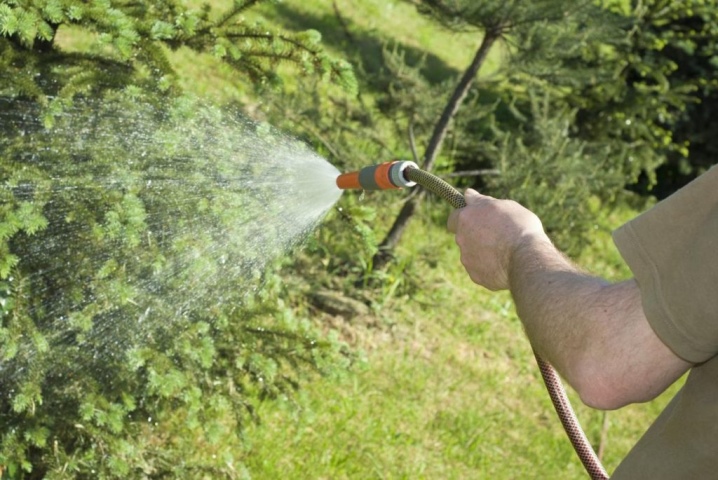
In winter, the plant is not watered at all.
The second point is caring for the trunk circle. We must not forget that the black spruce has a very developed root system, which grows over the years and extends further and further. However, she really does not like seals, so the ground near the spruce cannot be constantly trampled. It should be loosened after watering, you can after a couple of hours. This will allow the oxygen to flow quickly to the roots.
If the tree is still young, it is very important to take care of winter shelter so that the tree does not freeze. For this, the seedling is covered with spruce branches and mulched well. Spruce branches can only be harvested in spring, when the snow has completely melted, and the threat of repeated frosts will be minimal. In the spring, the tree can be fertilized, although this is not necessary. For this, complex fertilizing for coniferous crops is suitable.
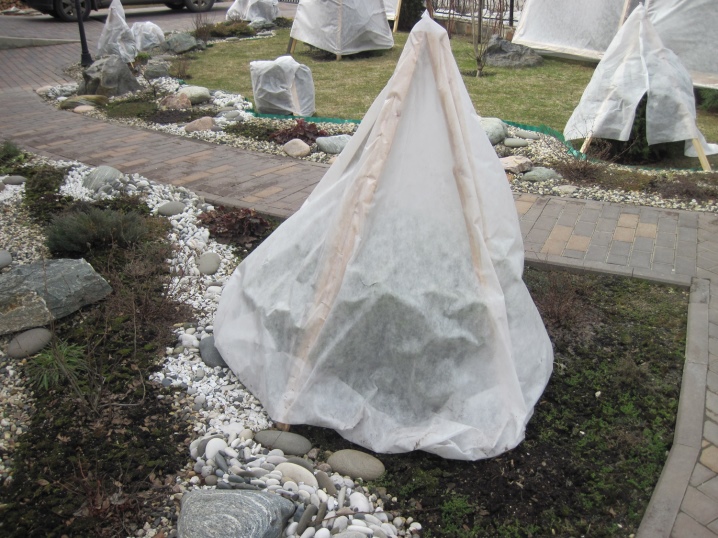
Pruning should be kept to a minimum as the tree grows rather slowly anyway. When doing it, you need to remove dried and diseased branches, which will allow the tree not to waste energy on them. But if the tree is in the composition of other plants or forms a hedge, it will need decorative, less gentle pruning. It will help form the crown, and after it the needles grow much faster.
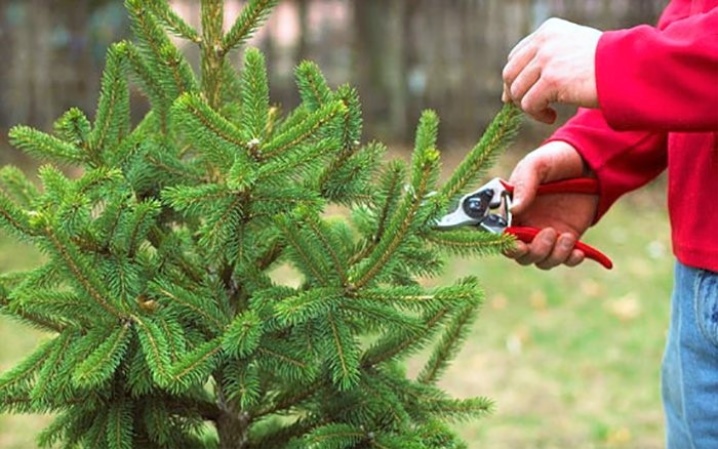
At the same time, do not forget that trimming is carried out exclusively with sterile tools, and the wounds that appear must be necessarily treated with garden varnish.
Black spruce is an exquisite and very beautiful plant that will refresh any summer cottage. It is successfully used for planting in parks, on the streets, added to flower arrangements in flower beds and alpine hills. Choosing this coniferous breed, you will never go wrong, because any of its varieties does not need painstaking work and care, but pleases the eye with its tenderness and elegance.
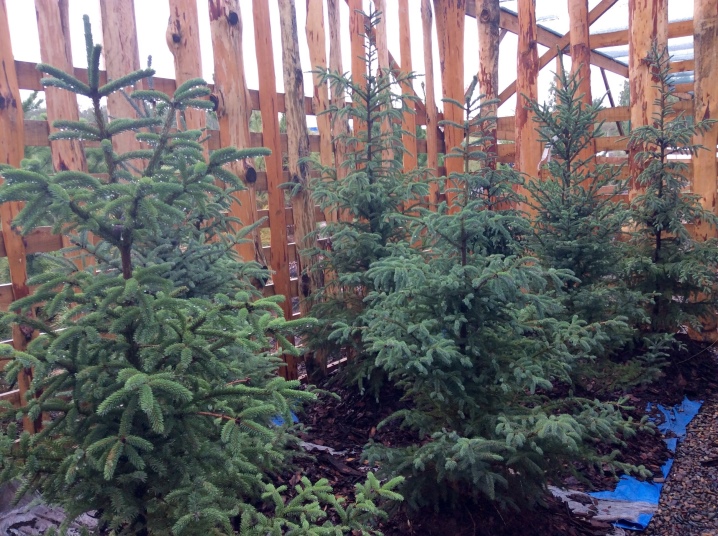
For an overview of the black spruce Nana, see the video below.



































































The comment was sent successfully.